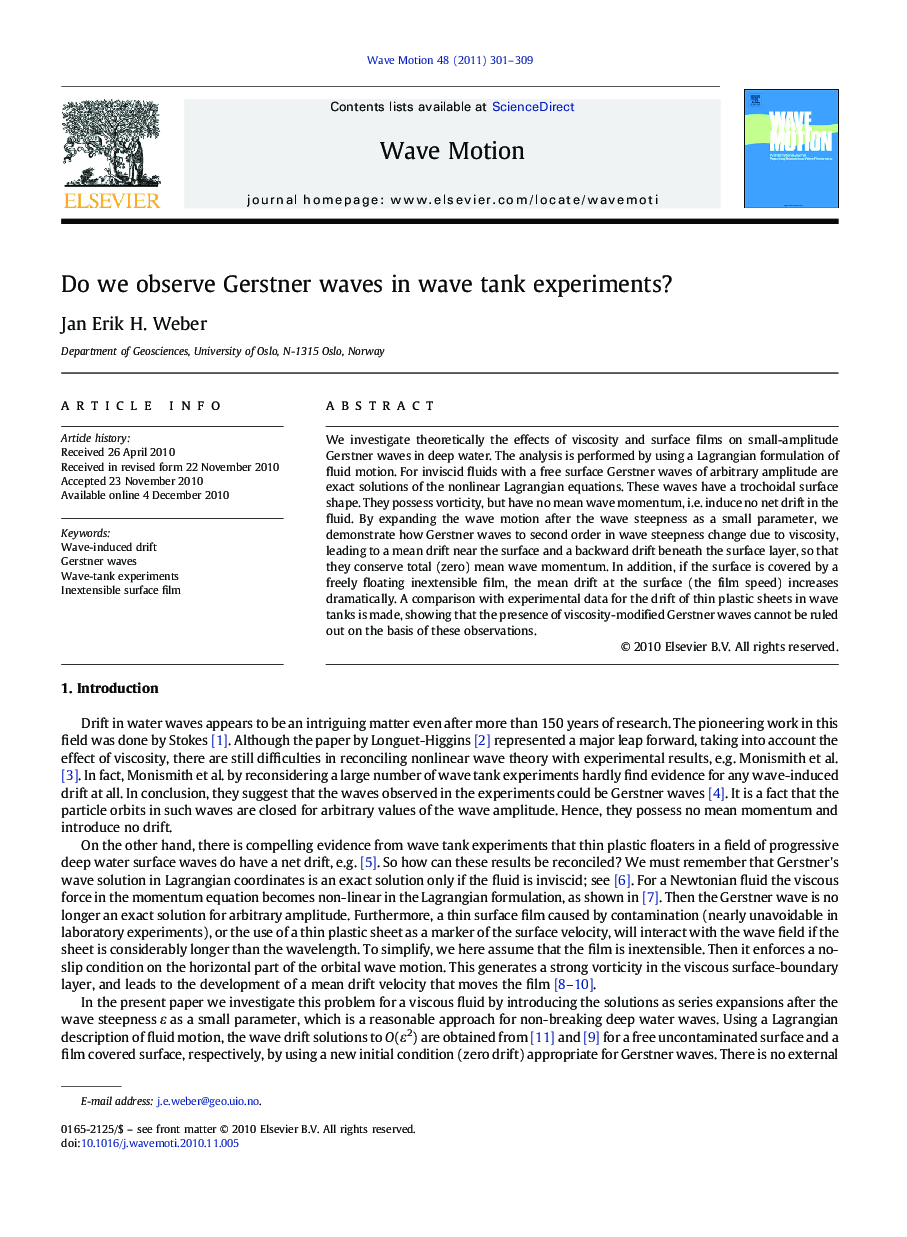| Article ID | Journal | Published Year | Pages | File Type |
|---|---|---|---|---|
| 1900896 | Wave Motion | 2011 | 9 Pages |
We investigate theoretically the effects of viscosity and surface films on small-amplitude Gerstner waves in deep water. The analysis is performed by using a Lagrangian formulation of fluid motion. For inviscid fluids with a free surface Gerstner waves of arbitrary amplitude are exact solutions of the nonlinear Lagrangian equations. These waves have a trochoidal surface shape. They possess vorticity, but have no mean wave momentum, i.e. induce no net drift in the fluid. By expanding the wave motion after the wave steepness as a small parameter, we demonstrate how Gerstner waves to second order in wave steepness change due to viscosity, leading to a mean drift near the surface and a backward drift beneath the surface layer, so that they conserve total (zero) mean wave momentum. In addition, if the surface is covered by a freely floating inextensible film, the mean drift at the surface (the film speed) increases dramatically. A comparison with experimental data for the drift of thin plastic sheets in wave tanks is made, showing that the presence of viscosity-modified Gerstner waves cannot be ruled out on the basis of these observations.
Research highlights▶ Viscous modification of Gerstner waves induces a mean drift current. ▶ The mean drift is confined to the region near the surface. ▶ The presence of an inextensible surface film enhances the mean drift. ▶ Film drift in wave tanks is not inconsistent with the presence of Gerstner waves.
